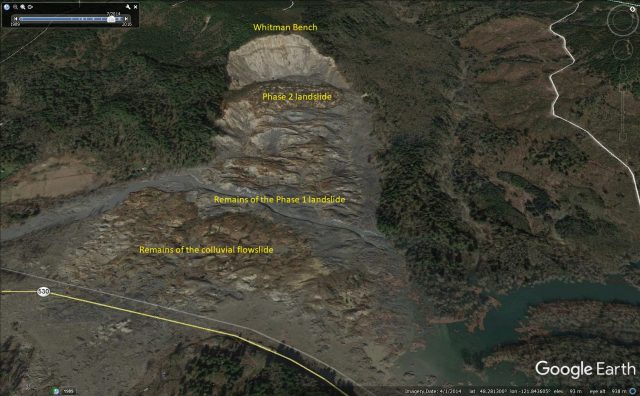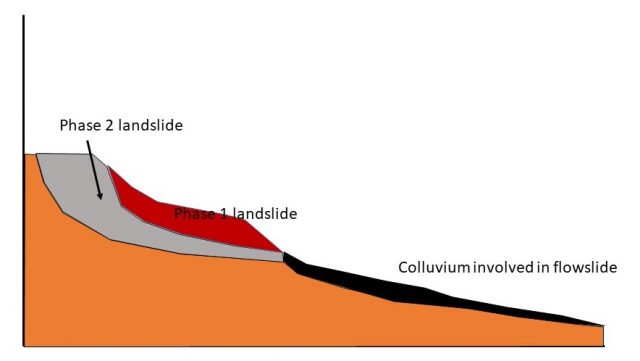28 April 2017
The Oso landslide: a new paper on the material properties and failure mechanism
Posted by Dave Petley
The Oso landslide: a new paper in the material properties and failure mechanism
There continues to be considerable discussion in the literature about the mechanisms and processes that led to the dreadful Oso landslide of 22nd March 2014, which killed 43 people. The debate has raged on the sequence of events that led to the landslide, and on the processes that controlled both the initial failure and long runout. This issue is revisited in a paper just published in the the Journal of Geotechnical and Geoenvironmental Engineering (Stark et al. 2017). In my view this study provides clarification on the likely sequence of events, and in particular shows that some of the previous ideas do not fit with observations.
Stark et al. (2017) propose a two phase mechanism, in common with some others. However, they also propose that most of the damage was caused by a complex first phase of movement in which an initial slip on a compound (i.e. non-circular) surface impacted upon colluvium deposits further down the slope. These deposits underwent liquefaction, and flowed across the valley to create the huge damage, and loss of life. The colluvium behaved as a classic flowslide. The main elements of this are shown in my sketch below:

Google Earth image showing the main elements of the Oso landslide
.
This was followed by a second failure, also shown in the schematic diagram, that results in the morphology that we see at the site today. This was compound shear surface landslide from the so-called Whitman Bench, consisting of unsaturated sands, glacial till and clays, which show a much higher level of friction, meaning that this slide was much less mobile than the first phase. The cause of this second landslide was debuttressing by the phase one slide. I have made a quick sketch of this sequence below:-

A sketch of the Stark et al. (2017) sequence of events at the Oso landslide
This explanation is, in my view, consistent with the available evidence, including the morphology of the site, the eye witness descriptions of what happened, the seismic data and the properties of the materials. Other explanations, such as those that propose an initial failure in the lower portion of the slope, do not seem to be consistent with the evidence.
In essence this is a more conventional explanation for the landslide than some of those that have gone before. It is reassuring that the slide behaviour fits with that observed from elsewhere.
Reference
Stark, T.D., Baghdady, A.K., Hungr, O. and Aaron, J. 2017. Case Study: Oso, Washington, Landslide of March 22, 2014—Material Properties and Failure Mechanism. Journal of Geotechnical and Geoenvironmental Engineering, 143 (5).


 Dave Petley is the Vice-Chancellor of the University of Hull in the United Kingdom. His blog provides commentary and analysis of landslide events occurring worldwide, including the landslides themselves, latest research, and conferences and meetings.
Dave Petley is the Vice-Chancellor of the University of Hull in the United Kingdom. His blog provides commentary and analysis of landslide events occurring worldwide, including the landslides themselves, latest research, and conferences and meetings.